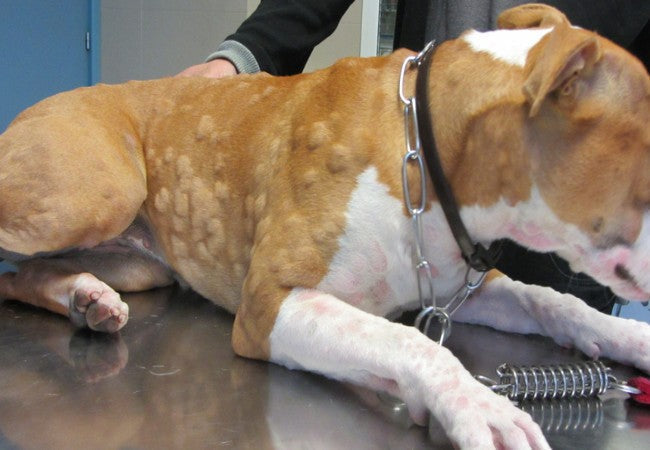Vet’s 2025 Guide to Grass Allergies in Dogs – Symptoms, Diagnosis & Relief 🐾

In this article
Vet’s 2025 Guide to Grass Allergies in Dogs – Symptoms, Diagnosis & Relief 🐾
By Dr. Duncan Houston BVSc
💡 What Are Grass Allergies?
Grass allergies in dogs are a type of atopic dermatitis caused by sensitivity to airborne and contact allergens such as grass pollens. These allergens penetrate the skin or are inhaled, triggering an overreaction of the immune system.
⚠️ Who’s at Risk?
- Dogs older than 1 year, once sensitized
- Breeds predisposed to atopy: retrievers, setters, terriers, Bulldogs, Lhasa Apsos, Dalmatians
- Multi-allergic dogs (e.g., flea or food allergies) may react more severely
🌱 Symptoms to Watch For
- Persistent scratching, biting, chewing—especially on paws, face, belly
- Red, inflamed, oozing, or crusty patches—often on chest, ventrum, limbs
- Shaking head, ear infections or redness
- Respiratory signs: sneezing, watery eyes or nasal discharge
- Occasional vomiting or diarrhea during severe exposures
- Hives or facial swelling in rare, acute cases (anaphylaxis)
🔬 How Grass Allergy is Diagnosed
- Exclude other causes: fleas, food allergy, parasites
- Allergy testing—IDEXX or intradermal skin test to identify specific grass pollens
- Treatment trial: symptomatic relief confirms suspected allergy
💊 Treatment Options at a Glance
- Antihistamines (e.g., diphenhydramine, cetirizine): mild relief, low side effects
- Omega‑3/6 supplements: anti-inflammatory for skin health
- Topical care: medicated shampoos, wipes, skin soaks to soothe & clean
- Corticosteroids: for moderate to severe itching—monitor dosage carefully
- Apoquel (Oclacitinib): fast-acting JAK inhibitor for atopy
- Cytopoint: injectable antibody therapy—effective, fewer side effects than steroids
- Immunotherapy (“allergy shots”): long-term desensitization tailored to test results
🏠 Environmental Management
- Wipe paws/coats after outdoor time to remove pollen
- Bathe with hypoallergenic shampoo regularly
- Restrict outdoor exposure during peak pollen seasons (spring/fall)
- Use air purifiers, keep windows closed, and remove shoes indoors
🧪 Preventive & Supportive Strategies
- Start treatment before peak seasons—proactive relief
- Maintain flea control & regular bathing—reduces skin irritation
- Continue skin and ear care; manage infections early
- Try supplements: probiotics, omegas—support skin barrier
📈 Prognosis & Follow-Up
With accurate diagnosis and a multi-modal approach, most dogs see significant improvement. Chronic management is key, and immunotherapy offers potential long-term remission.
📲 Tools for Owners & Pets
- Ask A Vet: expert guidance on medications, flare-ups, dosing & testing
🌟 Real-Life Case
Case: “Milo,” a 3-year-old Retriever, developed seasonal paw licking and ear rubbing each spring. Following allergy testing, Milo began Apoquel, omega-3 supplements, weekly medicated baths, and environmental wipes. Within two weeks, itching subsided, coat improved, and annual flare-ups were shorter with immunotherapy support. 🐶🌼
✅ Key Takeaways
- Grass pollen is a common inhalant allergen for dogs—itching & skin issues are hallmark signs.
- Diagnose via elimination, allergy testing & careful history.
- Effective management spans meds, topicals, immunotherapy & environmental control.
- Supplements and timely treatment greatly reduce flare-up severity.
- Ongoing support via Ask A Vet helps optimize care and build long-term wellness 🩺
📥 Need Help Now?
If your dog is itching, licking, or showing allergy signs, download the Ask A Vet app for real-time expert support. Visit AskAVet.com for 24/7 veterinary guidance. 🐾🩺






